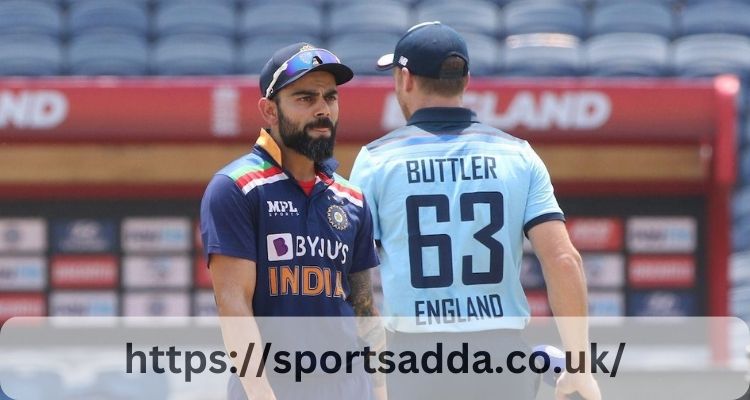India and England share an illustrious tradition in Test cricket, meeting over 90 times to play one another, winning 51 and drawing 21 of those encounters respectively.
Root and Bairstow have formed an unbroken 48-run partnership in keeping Ashwin at bay so far; he will hope to get rid of them during the second session. In this article, we will discuss about India National Cricket Team Vs England Cricket Team Stats.
1. Runs scored
England and India share one of the fiercest rivalries in world cricket, having faced each other many times across various formats of the game.
Root and Bairstow have produced an excellent 48-run partnership in the first session, keeping Ashwin, Jadeja, and Axar at bay and keeping run scoring within reach.
Defending champions Australia are coming into this match off some strong form in the finals against USA and South Africa, yet their record against India in T20 Internationals has been disappointing. Here we take a look at their chances in this encounter.
2. Wickets taken
Indian spinners have dominated the Test series between India and England. R Ashwin recently overtook Anil Kumble as the fastest bowler to 500 Test wickets; he accomplished this milestone during the third Test against England at Rajkot.
India’s convincing victory in the inaugural Test marked their greatest ever Test victory against England since 2021 when they overcame New Zealand by 372 runs. It also eclipsed India’s previous best mark against New Zealand at 372-run win from 2021.
Virat Kohli leads India against England in Test matches with 18 victories as captain; MS Dhoni comes second with 11 wins; while BS Chandrasekhar and Vinoo Mankad tied at third place each have nine wickets each. England had the least successful record with 15 victories versus 23 defeats (including seven drawn matches) overall in India.
3. Bowling figures
England’s 4-1 Test series defeat by India can be seen from several perspectives: did England get outmuscled, or just succumb to Ravichandran Ashwin and Ravindra Jadeja’s relentless pace?
Nehra’s record-setting bowling performance against England at the 2003 Asia Cup remains one of the great bowling performances ever by an Indian player and ranks fourth on the all-time top bowling figures in ODIs list.
MS Dhoni leads all Test matches involving England with 67 dismissals including catches and stumpings, followed by Jos Buttler, Ben Stokes, Moeen Ali and Adil Rashid. Jasprit Bumrah led India at the 2019 World Cup by collecting 18 scalps in nine matches, boasting the lowest economy rate of 4.41 and nine maidens as his leading wicket-taker.
4. Batting average
A cricketer’s batting average measures his batting skill independently from other batsmen in his team and gives an indicator of their performance under pressure.
India and England have met 106 times in one-day internationals, with India winning 56 matches while England taking 50. Three games ended up tied.
5. Bowling strike rate
A bowling strike rate measures the speed at which bowlers reach their primary goal in a match – taking wickets. This figure can be determined as follows: (number of wickets taken/total balls bowled). A higher bowling strike rate indicates more wickets being taken per over by that bowler.
Ben Stokes and James Taylor put on an outstanding 142-run partnership during England’s Test series against India, yet England only averaged 25.6 runs per wicket on average compared to 2022 when Hyderabad played host to them – far lower than their 24.8 average which had seen them record their lowest average runs per wicket average in that series.
India’s bowlers have so far dominated this head-to-head battle, with Ravichandran Ashwin and Jadeja claiming most wickets. Can they keep it up? That depends on pitch conditions as well as pressure put upon opposition batsmen by India – an increased bowling strike rate could prove decisive in an otherwise close contest.
6. Batting strike rate in ODIs
While batting average measures the total runs scored per innings, strike rate measures the speed with which batsmen score those runs. A high strike rate indicates an attacking and risk-taking batting style while low strike rates suggest more patient and conservative play from their batsman.
Some maverick batsmen like Virender Sehwag, AB de Villiers and Brendon McCullum have maintained a consistently high strike rate during their careers – particularly in ODI cricket. It should be noted that strike rates vary depending on whether it is Test or ODI cricket – the former requires patience and discipline while the latter allows more free-flowing play styles – thus it may be seen that players with higher strike rates also tend to have lower batting averages; although players such as Virat Kohli seem adept at striking an ideal balance between these stats!
7. Batting average in Tests
One of the greatest aspects of Test cricket is the multitude of interpretations for its outcome. England’s 4-1 loss against India left many questions unanswered – for instance, did their hyperaggressive approach discombobulate India’s batsmen or contribute directly to their defeat?
Batting average is an excellent indicator of a batter’s consistency; however, when evaluating player performances more fully it should not be the sole metric to consider; batted strike rate should also be taken into consideration.
India defeated England in Rajkot by scoring 557 runs – setting an unprecedented total for any men’s Test match ever played in that format. Jaiswal and Sarfaraz combined to hit 28 sixes during that Test match!
8. Batting average in T20s
Batting average is of particular significance in T20 cricket, where its importance surpasses other forms. Where ODI and Test cricketers tend to aim for averages in the 30-40 range, T20 players need an impressive average to excel.
England was unable to beat India despite its impressive bowling performances at Rajkot, losing one wicket every 42 balls before being bowled out for just 81 in their second innings – the lowest total they ever faced at home against an Indian team due to poor batting performances.
9. Batting average in T20s in ODIs
Batting average is often misunderstood in T20 cricket matches; its significance does not carry as much weight than in Tests or ODIs due to its more impact-driven nature. A few overs without wickets falling, maiden overs or 3 successive boundaries can change the entire context of a match in an instant!
Test batters who also possess an impressive ODI record do slightly better in T20s compared to pure white ball specialists, though their contributions don’t necessarily translate to wins. Domestic T20 specialists tend to play riskier than their all-format counterparts as they try to get off to an early start and post big scores within five overs; this has an indirect influence on their batting average in ODIs; however, this change is small.
10. Batting average in T20s in Tests
India and England have enjoyed a fierce, longstanding rivalry since 1864. Both teams meet often across various formats and have produced some thrilling matches over time.
Test and ODI batting averages tend to correlate closely with T20 cricket batting averages, though there may be some variance. In general, batters who excel as ODI batsmen also do better in T20 than pure white ball specialists.
However, having a higher T20 average doesn’t indicate a player is better overall – other factors such as strike rate, consistency and batting style play a more prominent role than their batting average does. That is why it is vitally important when trying to assess someone’s quality that you take a close look at all their statistics.
Also Read:


